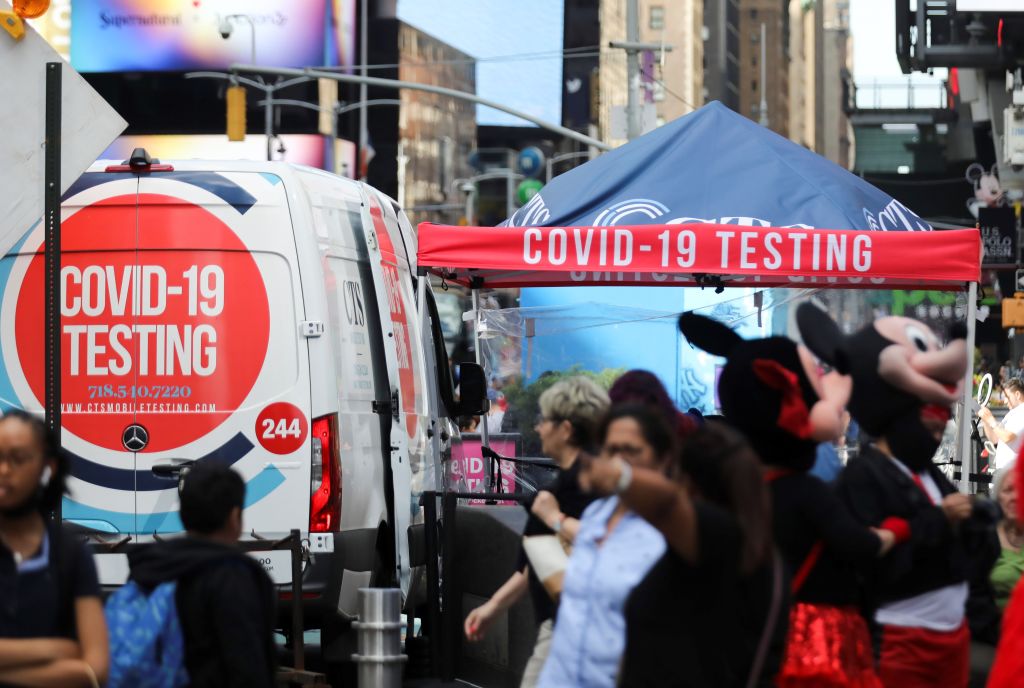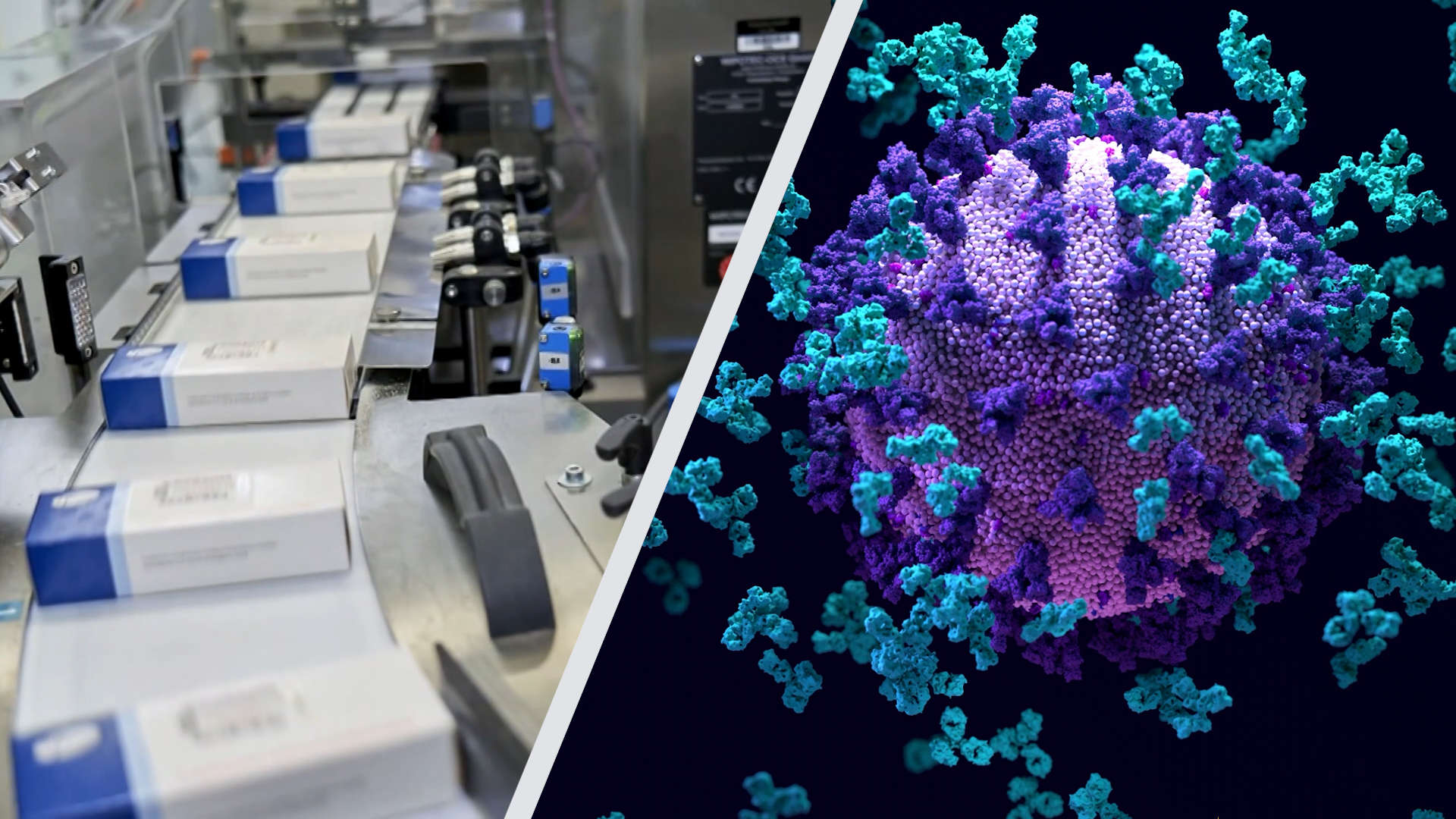The COVID-19 subvariant estimated by public health officials to be substantially more contagious than the first descendant of the potent omicron strain is now the dominant strain in the United States, according to the CDC's latest weekly update.
That subvariant, BA.2.12.1, has been increasing prevalence at a far faster rate in the New York area than it has nationally for weeks. It became the dominant strain locally in late April and accounted for nearly 70% of regional cases by the first week of May.
As of the CDC's latest update, BA.2.12.1 accounts for up to 83.2% of all COVID-19 circulating in the region that encompasses the Empire State. The subvariant is believed to be at least 25% more transmissible than BA.2, which is said to be 30% more contagious than its predecessor, omicron, though it hasn't proved more lethal.
The CDC puts BA.2.12.1's prevalence in the New York region, which for its purposes also includes New Jersey, Puerto Rico and the British Virgin Islands, at about 77.8% (with a range from 71.3% to 83.2%) of COVID cases. Nationally, that strain's prevalence is estimated to be as high as 63% but at least 59% of US COVID cases sequenced to isolate variants. The CDC acknowledges its case share is likely higher.
Get Tri-state area news and weather forecasts to your inbox. Sign up for NBC New York newsletters.

Tuesday's federal update marks the first time BA.2.12.1 accounted for the majority of cases nationwide, though the transition had been anticipated for weeks.
And it comes as more of America finds itself enmeshed in the throes of COVID once again.
Nearly 300 U.S. counties, about 9% of all of them, are now considered high risk for COVID community spread by the CDC. The number has more than quintupled since the first week of May, when just 56 met that CDC standard.
New York state accounts for 18% of those 297 currently high-risk counties, with 54 of its own -- or 87% of its total -- falling into the same threat category.
Also included: All five boroughs of New York City, where health officials increased the COVID alert level to high last week. The city's alert system follows the same parameters the CDC outlines in its community-based guidance. And an updated mask recommendation -- but no new mandate -- for all to wear face coverings indoors regardless of vaccination status accompanied the city's announcement.
The NYC health department's variant tracker doesn't explicitly break out subvariant BA.2.12.1, but it does indicate that BA.2-linked strains account for 99% of cases. The city sequenced about 10% of its positive COVID samples to isolate variants in the latest week of data, down from an average closer to 15% since mid-March.
Neither the state nor the federal government breaks out weekly genetic sequencing data, but the share of cases that undergo that exhaustive process has been a fraction of the total confirmed since the pandemic started.
According to the CDC, New York state has sequenced about 3.62% of all its reported positives since March 2020. That share is higher than other high COVID volume states like neighboring New Jersey (2.86%) and Florida (2.57%), but lower than ones like California (5.96%), the agency's latest data shows.
Nationally, only about 0.4% of the more than 83 million confirmed cases have undergone the same tests.
More Coverage
No scientific evidence to date links BA.2.12.1 to more severe COVID-linked illness or reduced vaccine efficacy at this point, and while the heightened transmissibility appears clear, experts and medical researchers believe preventive efforts, especially around vaccination, should yield overwhelmingly mild cases that need no treatment.
True, hospitalization rates have been increasing, but they remain manageable across New York City and state and are holding at a fraction of the total the Empire State saw at the first peak in April 2020 and more recently with omicron in January. That's primarily why no new severe surge is expected, even amid the case uptick.
Ultimately, experts and elected leaders alike are calling on the public to reinvest in core COVID prevention strategies like hand-washing, mask-wearing, staying home when sick, as well as vaccinations and boosters, to stem this latest viral tide.
Gov. Kathy Hochul sought to underscore the point in her latest COVID update.
"As we are continuing to monitor the numbers, I encourage all New Yorkers to continue taking advantage of the tools we have available to protect against and treat COVID-19," the Democrat said. "The best way to avoid serious illness from COVID-19 is by keeping up to date with your vaccination and booster doses."
"Be sure to get tested to ensure you're not spreading the virus to your loved ones," Hochul added. "If you test positive, talk to your doctor about treatment. The worst thing we could let happen is let our guard down, so continue to remain vigilant so we can move forward safely through this pandemic."




